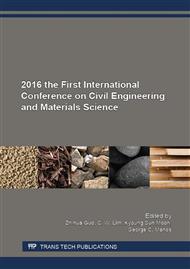p.129
p.134
p.139
p.143
p.151
p.156
p.161
p.166
p.171
Impact of Tool Pin Geometry and Optimized Process Parameters on Mechanical Properties of Friction Stir Welded AZ80A Mg Alloy
Abstract:
In this paper, the influence of optimized FSW process parameters namely tool rotational speed, feed rate, mechanical axial force and impact of tool pin geometry on the mechanical properties of AZ80A Mg alloy are experimentally investigated in a detailed manner. M35 grade High Speed Steel (HSS) tool with three different pin geometries namely straight cylindrical, threaded cylindrical and taper cylindrical was employed in this investigation. The joints obtained under these conditions are subjected to tensile tests as per ASTM (American Society for Testing and Materials) B557M – 10 standards and tensile fracture surfaces are examined using optical and Scanning Electron Microscope (SEM). The investigations proved that defect free sound joints with better mechanical properties are produced by taper cylindrical tool pin geometry under optimized process parameter values. It was experimentally found that the optimized FSW process parameter values namely 1.0 mm/min feed rate, 5 kN axial force, 1000 rpm of tool rotational speed along with a taper cylindrical pin profiled tool is preferable for FSW of AZ80A Mg alloy of 5mm thickness.Moreover, this experimental work revealed us that the taper cylindrical pin profiled tool fabricated sound, defect free welded joints along with better & improved mechanical properties when compared with other two pin profiles.
Info:
Periodical:
Pages:
151-155
Citation:
Online since:
August 2016
Authors:
Price:
Сopyright:
© 2016 Trans Tech Publications Ltd. All Rights Reserved
Share:
Citation:


